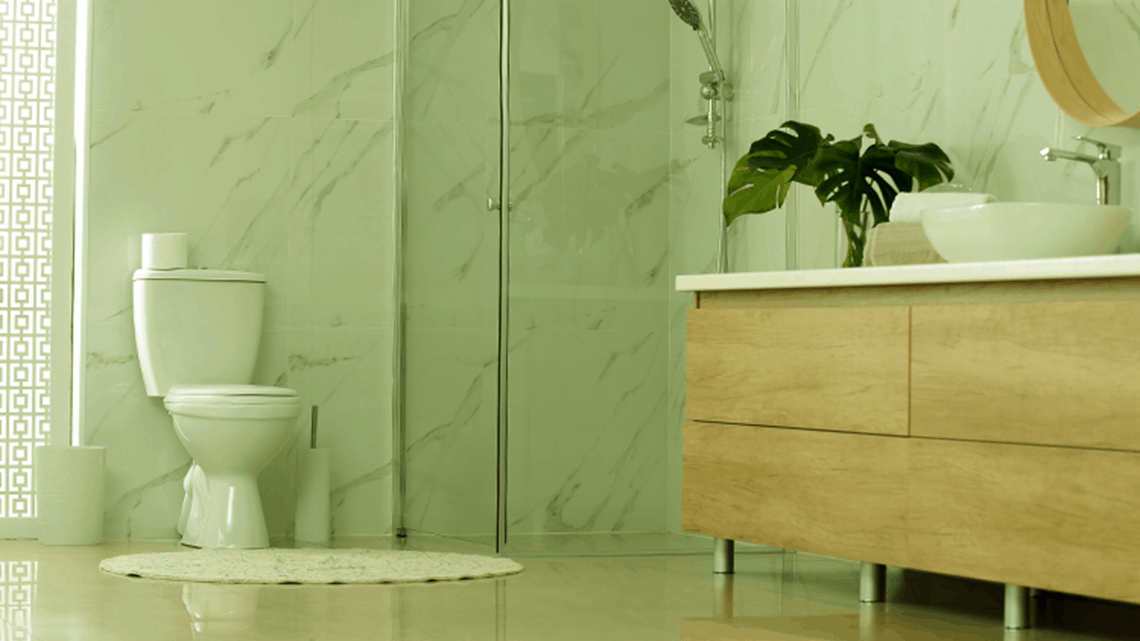Bathroom hygiene and infection control
Bathrooms are one of the most used places within any home, office, university, etc., and also the area where most of the germs are hiding.
In the aftermath of the Covid-19 pandemic, it is crucial to acknowledge the importance of bathroom hygiene and disinfection measures for effective infection control and prevention.
Most bathroom issues are due to many uses, poor ventilation, warm or damp environments, closed spaces, and surfaces that attract a higher number of audience.
Not only are the bathroom surfaces full of bacteria and viruses, but the air inside is contaminated with trace particles of fecal matter all around - you wouldn’t have ever thought that, would you?
Therefore, it’s time you must know about the most sensitive bathroom hygiene hotspots. So that you can take necessary actions for infection control and prevention in the bathroom.
Air Hygiene
Airborne diseases caused by germs, bacteria, viruses, and fungi can spread whenever water droplets are created due to the flushing toilets and urinals, water splashing in sinks and drains, and aerosols coming out of leaky sewerage systems.
However, the aerosols dispersed by the users can remain in the air for hours. If proper precautions are not taken, this might prove collectively detrimental to the user’s health.
Poor ventilation will help keep these airborne microbes inside the bathroom, causing them to produce bad odours and ultimately leaving an unpleasant and bad experience.
To prevent this, use Dettol’s neutra air spring blossom freshener to eliminate those tough bacterial odours, leaving the air and your bathroom smelling pure and clean.
One of the most important issues that you should focus on is toilet sneezing. The effect caused by flushing the toilet while the toilet lid is open leads to the spray of germs and bacteria all around the bathroom.
In times like these, when hygiene is extremely important, always close the lid before flushing. Studies show that doing so reduces the spread of germs up to 12 times – an amazing thing to know and implement.
Warm and damp bathroom conditions resulting from faulty plumbing, poor ventilation, or persistent condensation allows mold growth and the production of spores that pollute the air in the room. Follow the steps mentioned in our “controlling the mold and mildew” guide to keep your bathroom clean.
Surface Hygiene
There are many surfaces in the bathroom that people come in contact with, pick up infectious microorganisms, or transfer them to the surfaces through contaminated hands.
While in the bathroom, consider every surface contaminated and infected, as this will help you stay vigilant and protect yourself from unseen germs lurking in the shadows.
The airborne microbes in the form of droplets from toilet sneezes can easily land on bathroom surfaces, such as door handles, toilet flush buttons, the floor, wash basins, taps, soap dispensers, etc.
As for cleaning and disinfecting such surfaces, they should be scrubbed with a cleaning cloth soaked in antiseptic liquid, followed up by a sprinkle of the disinfectant bathroom killer spray.
This process should be repeated daily because germs begin to develop and colonize each time someone uses the facility.
Clothes, shoes, and personal belongings can be sources of cross-contamination and carry bacteria, viruses, fungal pollen, and allergens from outside into the washroom.
Generally, everybody should be asked to wear masks, even in bathrooms, and points of contact should be minimized or eliminated.
Surely you can’t keep various cleaning and disinfecting tools with yourself whenever you need to use the bathroom. In such cases, wiping the bathroom surfaces with an antibacterial multiuse wipe before using them is highly advisable.
Hand Hygiene
Closely linked to surface hygiene, hand hygiene is recognized as one of the most important factors in preventing various infectious diseases.
Maintaining hand hygiene requires good personal hygiene habits, adequate washroom maintenance to keep hygiene levels high, and sufficient facilities for users to wash their hands hygienically.
Encouraging users to wash their hands with antibacterial soap or liquid hand wash for at least 20 seconds after using the washroom is the best way to eliminate germs and bacteria.
In addition, knowing how to properly wash your hands is equally important as using the recommended and globally accepted hand hygiene products.
Several factors in washroom design can help to improve hand hygiene, including:
- Use no-touch technology for taps, soap dispensers, doors, sanitizer dispensers, etc.
- Only use antibacterial soap or liquid hand wash for 99.9% of germ-protection.
- Install hand dryers in the bathroom so users can dry their hands because wet hands accumulate more microorganisms.
In the absence of anti-bacterial soap or liquid hand wash, hand sanitizers and disinfecting wipes should be promoted and encouraged.
FAQs
Why is bathroom hygiene important?
Bathroom hygiene is important to prevent mold, grime, and infectious diseases from spreading.
What happens when you don't clean your bathroom?
By abandoning toilet hygiene, you will allow your bathroom to become a breeding ground for harmful germs, bacteria, and infections. Additionally, your bathroom may even potentially foster mold growth in some areas if it's neglected for too long.
What are the 3 types of infection control methods?
The three types of infection control methods include:
- Hand hygiene
- Personal Protective Equipment (e.g., gloves, masks, eyewear).
- Respiratory Hygiene/Cough Etiquette
